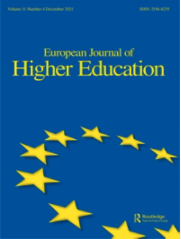Exploring tuition fees as a policy instrument of internationalisation in a welfare state
The case of Sweden, European Journal of Higher Education

This article sheds light on some challenges that internationalisation raises for policymakers regarding public funding of higher education in a welfare state by examining policy logics for introducing tuition fees for international students in Sweden 2011.
The funding of higher education
Most European countries fund HE mainly by public means, with no or low tuition fees. However, traditionally free-tuition welfare states like the Nordic countries have introduced high tuition fees in recent decades, limited to international students (Nordic Council of Ministers 2013).
In Sweden, tuition fees for international students1 were introduced in 2011. The Swedish economy was relatively spared the consequences of the 2008 economic crisis, and the reform was implemented, it is worth noting, at a time when public funding of universities had been increasing. The reform was only directed at non-EU students and was even accompanied by a strengthening of the judicial protection of a free-tuition system for national students. As the case of Sweden and other Nordic countries illustrates, new conditions and underlying assumptions of a cost-sharing logic between the ‘national’ and ‘international’ student are now in place, and in the case of Sweden not necessarily as a result of budget deficits.
Read the whole article here
Exploring tuition fees as a policy instrument of internationalisation in a welfare state – the case of Sweden
Hans Lundin & Lars Geschwind (2021) Exploring tuition fees as a policy instrument of internationalisation in a welfare state – the case of Sweden, European Journal of Higher Education, DOI: 10.1080/21568235.2021.1994867

